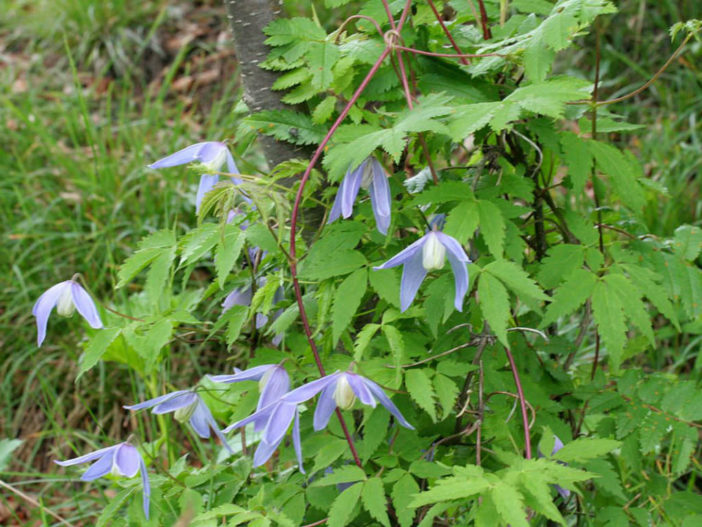Scientific Name
Clematis alpina (L.) Mill.
Common Name(s)
Alpine Clematis, Austrian Clematis
Synonym(s)
Anemone atragene, Atragene alpina, Atragene austriaca, Atragene clematides
Scientific Classification
Family: Ranunculaceae
Subfamily: Ranunculoideae
Tribe: Anemoneae
Genus: Clematis
Flower
Color: Light violet-blue
Bloom Time: Mid-spring to late spring
Description
Clematis alpina is a medium-sized deciduous climber with leaves divided into nine narrow-lanceolate leaflets. Flowers are light violet-blue, up to 1.6 inches (4 cm) long, with four tapering sepals, surrounding cream staminodes, and stamens in mid-spring to late spring with occasional flowers in midsummer.

Hardiness
USDA hardiness zone 3a to 8b: from −40 °F (−40 °C) to 20 °F (−6.7 °C).
How to Grow and Care
Clematis vary in their need for pruning. Some types flower on last year's vines, so you want to avoid cutting them to the ground in the spring. Others flower on current-year vines, so they don't mind being cut to the ground each year. Rather than driving yourself crazy trying to keep track of the ideal pruning technique for each cultivar, try this common-sense approach: leave the prior year's growth in place until mid-spring. Begin pruning only when you can see which vines are dead and which ones are starting to leaf out.
A happy Clematis plant puts out an amazing amount of flowers and foliage. Feed your plants well to keep them healthy and vigorous. In early spring, surround the plant with a shovelful of compost and a handful of granular organic fertilizer. Feed again, once or twice during the growing season, with a water-soluble organic fertilizer.
See more at How to Grow and Care for Clematis.
Origin
This species is native to Europe.
Links
- Back to genus Clematis
- Plantpedia: Browse flowering plants by Scientific Name, Common Name, Genus, Family, USDA Hardiness Zone, or Origin
Photo Gallery
Click on a photo to see a larger version.




